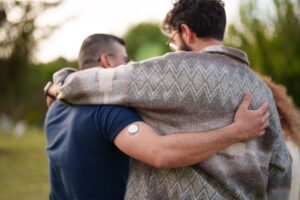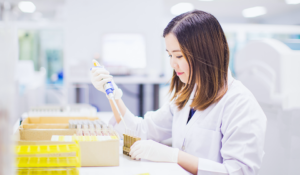I have type 1 diabetes (T1D) and am worried I’ll have to go into the hospital during the COVID-19 outbreak. How can I prepare?
April 22, 2020
Over the last few weeks we have been sharing tips on how to best manage your T1D at home during the COVID-19 outbreak when physical distancing is essential and self-isolation may be necessary. We understand that the thought of a hospital stay right now could be especially worrisomewhen facilities may be overburdened and there is concern around the risk of COVID-19 exposure. Below are a few tips to help you better cope in case a hospital visit is required:
Don’t delay visiting the hospital if you are worried about acute health concerns, especially diabetic ketoacidosis (DKA). DKA is a serious complication of T1D that can be life-threatening if not treated promptly. In general, emergency departments and hospital wards are implementing all measures possible to prevent the spread of infection and are highly organized in terms of dealing separately with patients with established COVID-19, presumptive COVID-19, and without COVID-19.
Notify your own healthcare team if you can. If possible, have your doctor call ahead of your arrival to ensure staff know that you have T1D, the medical issue you are going to the hospital for, and your arrival time.
Accept that T1D management will change during a hospital stay. Hospitals have policies for diabetes management that will mean changing your T1D regimen. Protocols vary by hospital, and some facilities may not allow the use of your own supplies and T1D technology, but experts advise that you bring your own supplies and be prepared to use them if possible.
If you use an insulin pump, remember that it is a self-management tool. If you are unable to self-manage your T1D (because of confusion or loss of consciousness), the pump will probably be temporarily discontinued and you will receive injections of long-acting and short-acting insulin instead. Be ready to relinquish this control, if it is necessary to provide you with the best care.
Continuous glucose monitors (CGMs) are not approved for use in hospitalized patients in Canada. You may be permitted to wear it to monitor trends and benefit from alarms, but readings will likely not be used by hospital personnel to adjust medication or insulin doses.
If you are receiving food at the hospital, you will likely be prescribed a diet appropriate for your age. In adults, this is usually an 1800 kcal “diabetes diet”. The typical meal on this diet has approximately 60g of carbohydrate per meal – but be sure to check with the hospital staff for more information on what is provided to you.
During infection, injury, or acute stress, insulin needs can increase, and blood glucose control can be challenging during a hospital stay. Glucose targets in hospitals are usually 4-10 mmol/L.
To assist in communicating your needs related to T1D to medical staff, you can consider preparing information about your treatment regimen to bring with you – whether you use an insulin pump or multiple daily injections. While these communication tools were developed with advice of practicing endocrinologists, they do not replace the personalized medical advice that you will receive in a hospital setting.
Don’t be shy to advocate for yourself. Most hospitals will have an endocrinology or diabetes team on call who can provide advice to physicians with less experience in prescribing insulin and caring for people with T1D. Don’t be afraid to ask, and take advantage of this resource.
Bring your own T1D supplies. Medical experts and many hospital staff are recommending that anyone with T1D bring at least two weeks of supplies with them if the are headed to the hospital.
What should I bring?
1. Blood glucose monitoring equipment
If you have one, take your CGM and a sufficient supply of sensors, transmitter and back-up transmitter, adhesives/tapes, pre-insertion wipes, batteries and/or charging device, cables.
OR
Standard blood glucose monitoring supplies: glucose meter, lancing device and a sufficient supply of lancets and strips. You may need to use the hospital’s meter, but could ask to use your own lancing device as it likely has smaller gauge needles.
2. Insulin and injection or pump supplies
If you use a pump: sufficient supplies (including reservoirs and filling mechanism (or pods if you use OmniPod), infusion sets, inserter devices), charging cable and/or battery
OR
If you use pens or syringes: a sufficient supply of pens and pentips, or syringes. Syringes are typically available, but, if permitted, you may feel more comfortable using what you are accustomed to
3. Vials of all insulins used, with back-up vials. Many hospitals do not carry all types of insulins, so if you would prefer not to change, bring your own.
4. Supply of treatments for non-severe lows (glucose tablets, juice etc.)
5. Glucagon (if available)
6. Ketone test strips (should be available, but good to take with you)
7. Copies of your healthcare team’s contact information
8. If possible, a copy of your last prescription
9. Details of your insulin regimen to share with medical staff: if medical staff need to manage your T1D on your behalf, this is information that they need communicated clearly and quickly. For example, if you use an insulin pump, try to download and bring a printout of the device settings, showing the basal profile, the profile of your carbohydrate-to-insulin ratios, the profile of your insulin sensitivity factor, targets for correction doses and active insulin time. Also include your typical total daily dose of insulin.
Consider virtual options to stay connected to family and other caregivers to minimize risk of exposure to COVID-19. Keep in mind that hospitals have a responsibility to prevent the spread of infection – more than ever during the COVID-19 outbreak. This means that hospitals may require testing and self-isolation of family caregivers who have symptoms of COVID-19, or of patients in the hospital. If usual caregivers can’t be present for their family member with T1D in the hospital, alternate caregivers may be asked to help out. In addition, options to connect virtually with family members and members of your healthcare team can help to support your time in the hospital.
For more information, visit www.breakthrought1d.ca/t1d-and-covid-19.
Do you have questions about T1D and COVID-19? Email us at T1Dquestions@jdrf.ca.




